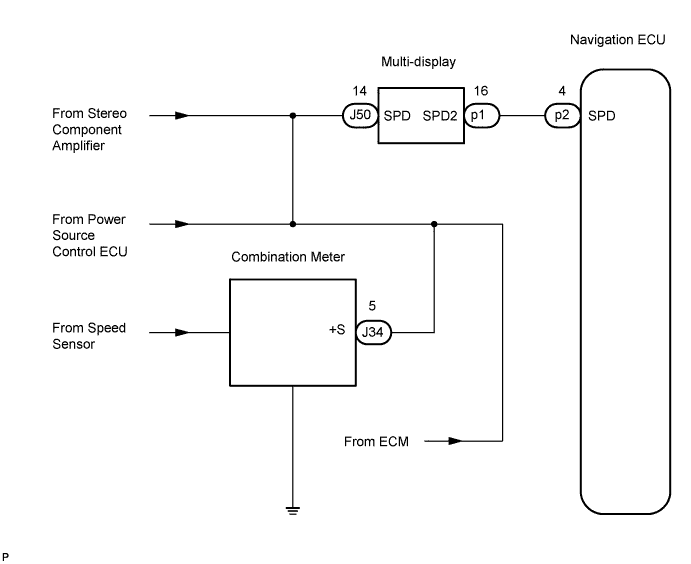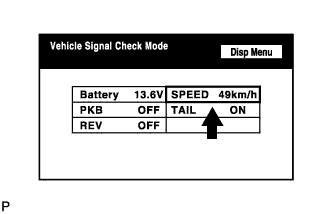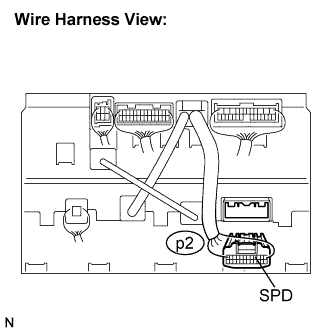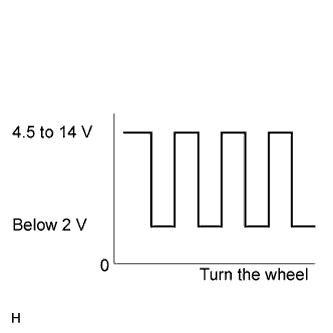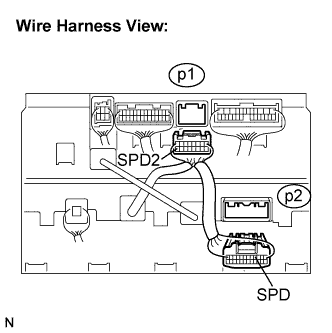Navigation System Vehicle Speed Signal Circuit Between Navigation Ecu And Multi-Display
DESCRIPTION
WIRING DIAGRAM
INSPECTION PROCEDURE
CHECK VEHICLE SIGNAL (DISPLAY CHECK MODE)
INSPECT NAVIGATION ECU
CHECK HARNESS AND CONNECTOR (NAVIGATION ECU - MULTI-DISPLAY)
NAVIGATION SYSTEM - Vehicle Speed Signal Circuit between Navigation ECU and Multi-Display |
DESCRIPTION
The navigation ECU receives a vehicle speed signal from the multi-display and information about the GPS antenna, and then adjusts vehicle position.- HINT:
- A voltage of 12 V or 5 V is output from each ECU and then input to the combination meter. The signal is changed to a pulse signal at the transistor in the combination meter. Each ECU controls the respective system based on the pulse signal.
- If a short occurs in an ECU, all systems in the diagram below will not operate normally.
WIRING DIAGRAM
INSPECTION PROCEDURE
| 1.CHECK VEHICLE SIGNAL (DISPLAY CHECK MODE) |
Enter the "Display Check Mode (Vehicle Signal Check)" (Click here).
While driving, compare the "Speed" indicator to the reading on the speedometer. Check if these readings are almost the same.
- OK:
- The readings are almost the same.
| | GO TO "VEHICLE SPEED SIGNAL CIRCUIT BETWEEN MULTI-DISPLAY AND COMBINATION METER" |
|
|
Disconnect the navigation ECU connector p2.
Measure voltage.
Jack up either one of the drive wheels.
Move the shift lever to the neutral position.
Turn the engine switch on (IG).
Measure the voltage between terminal SPD of the navigation ECU and body ground when the drive wheels are turned slowly.
- OK:
- Voltage pulses as shown in the illustration.
| 3.CHECK HARNESS AND CONNECTOR (NAVIGATION ECU - MULTI-DISPLAY) |
Disconnect the multi-display connector p1 and navigation ECU connector p2.
Measure the resistance according to the value(s) in the table below.
- Standard resistance:
Tester connection
| Condition
| Specified condition
|
SPD2 - SPD
| Always
| Below 1 Ω
|
SPD2 - Body ground
| Always
| 10 kΩ or higher
|
| | REPAIR OR REPLACE HARNESS OR CONNECTOR |
|
|
